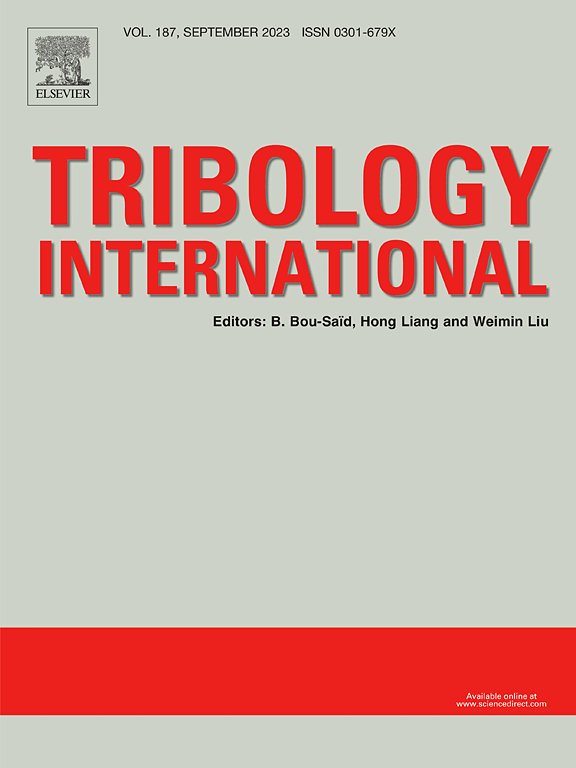Continuum modeling of dislocation microstructures under tribological loading
IF 6.1
1区 工程技术
Q1 ENGINEERING, MECHANICAL
引用次数: 0
Abstract
Dislocation-mediated plastic deformation governs the mechanical response and microstructural evolution in tribological contacts, yet linking these effects across scales remains challenging. We present a dislocation-based crystal plasticity model that couples micro-scale dislocation dynamics with macro-scale plastic deformation under sliding conditions. By incorporating crystallographic effects on dislocation mobility and capturing subsurface dislocation transport and trace line formation, the model reveals intricate microstructural features that influence plastic deformation, surface topography, and contact area evolution. Unlike continuum-scale simulations, which lack the resolution to capture microstructural details, or discrete simulations, which fail to couple microstructure-driven plasticity with tribological contact, this model bridges these gaps. Leveraging an implicit macro–micro coupling mechanism, a flux vector splitting-based numerical scheme, and a penalty contact boundary condition, this work provides a foundation for predictive modeling capturing dislocation-driven deformation under tribological contact.
摩擦学载荷下位错微观结构的连续模拟
位错介导的塑性变形控制着摩擦学接触中的机械响应和微观结构演变,但将这些影响跨尺度联系起来仍然具有挑战性。我们提出了一个基于位错的晶体塑性模型,该模型将滑动条件下微观尺度的位错动力学与宏观尺度的塑性变形耦合在一起。通过结合晶体学对位错迁移率的影响,并捕捉地下位错传输和痕迹线的形成,该模型揭示了影响塑性变形、表面形貌和接触面积演变的复杂微观结构特征。与连续尺度模拟(缺乏捕捉微观结构细节的分辨率)或离散模拟(无法将微观结构驱动的塑性与摩擦学接触结合起来)不同,该模型弥补了这些空白。利用隐式宏微观耦合机制、基于通量矢量分裂的数值格式和罚接触边界条件,为捕获摩擦学接触下位错驱动变形的预测建模奠定了基础。
本文章由计算机程序翻译,如有差异,请以英文原文为准。
求助全文
约1分钟内获得全文
求助全文
来源期刊

Tribology International
工程技术-工程:机械
CiteScore
10.10
自引率
16.10%
发文量
627
审稿时长
35 days
期刊介绍:
Tribology is the science of rubbing surfaces and contributes to every facet of our everyday life, from live cell friction to engine lubrication and seismology. As such tribology is truly multidisciplinary and this extraordinary breadth of scientific interest is reflected in the scope of Tribology International.
Tribology International seeks to publish original research papers of the highest scientific quality to provide an archival resource for scientists from all backgrounds. Written contributions are invited reporting experimental and modelling studies both in established areas of tribology and emerging fields. Scientific topics include the physics or chemistry of tribo-surfaces, bio-tribology, surface engineering and materials, contact mechanics, nano-tribology, lubricants and hydrodynamic lubrication.
 求助内容:
求助内容: 应助结果提醒方式:
应助结果提醒方式:


